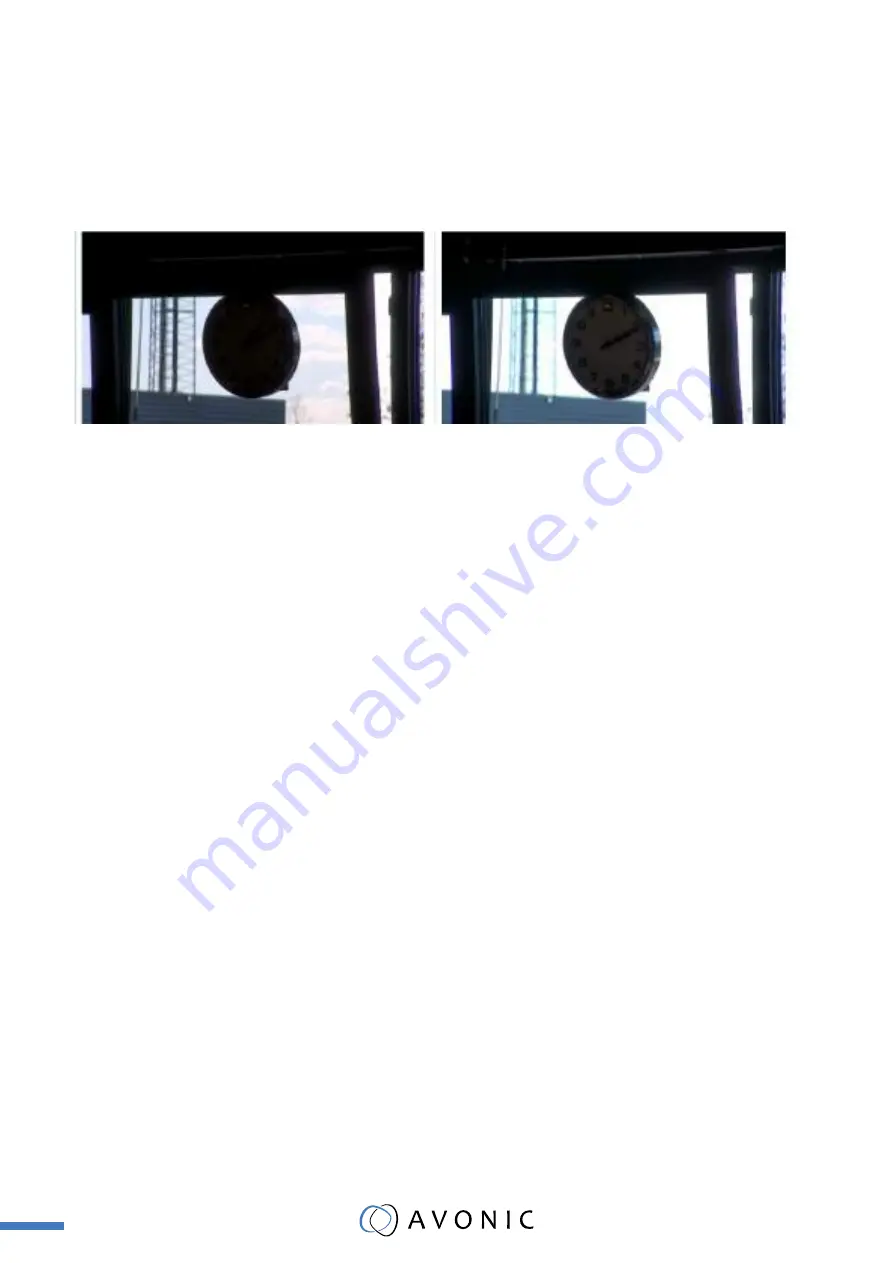
19
Mode: auto - continued
BLC
Back Light Compensation ON/OFF
This setting is to compensate for having to film against bright lighting directly into the lens.
See the pictures below:
BLC: OFF
BLC: ON
Flicker
This setting is to set your camera up in such a way that it’s able to cope with the flickering of artificial lighting
in the space where it has to operate. The options are 50Hz, 60Hz and off.
G.Limit
Gain limit is the maximum level of artificial brightness and contrast that the camera may add to the image
automatically. This setting will make a significant difference to the overall picture. Make sure that this setting
is kept ‘within reason’ as it can add noise to the picture in dark areas and produce a washed out greyish
picture.
DRC
Dynamic Range Compression has a similar effect on the picture as the above mentioned gain limit. The DRC
works by compressing the natural dynamic range of the image by taking out the darkest and lightest parts
of the image. This can be a particular helpful setting when the light conditions are challenging. The differen-
ces should be clearly visible in dark parts of the image, they will become lighter/more grey once the level of
DRC is increased.
Manual Mode
In this mode you can set manually the shutter, Iris and DRC options.
Shutter
The first setting to make is the shutter setting. This determines the amount of time per second that the
sensor is exposed. The shutterspeed setting range is 1/25th of a second (40 milliseconds) to 1/10000th of a
second (0.1 milliseconds)
You can imagine that when you shoot video with a shutter time of 1/25th of a second, the video becomes
blurry and overexposed. The faster the shutter is set to open and close, the sharper your filmed object will
become, but the amount of light that falls onto the sensor is also diminished. If you don’t know exactly what
you are doing or the light conditions change a lot, it’s best practice to keep the camera on the automatic
exposure setting.
www.avonic.com
















































